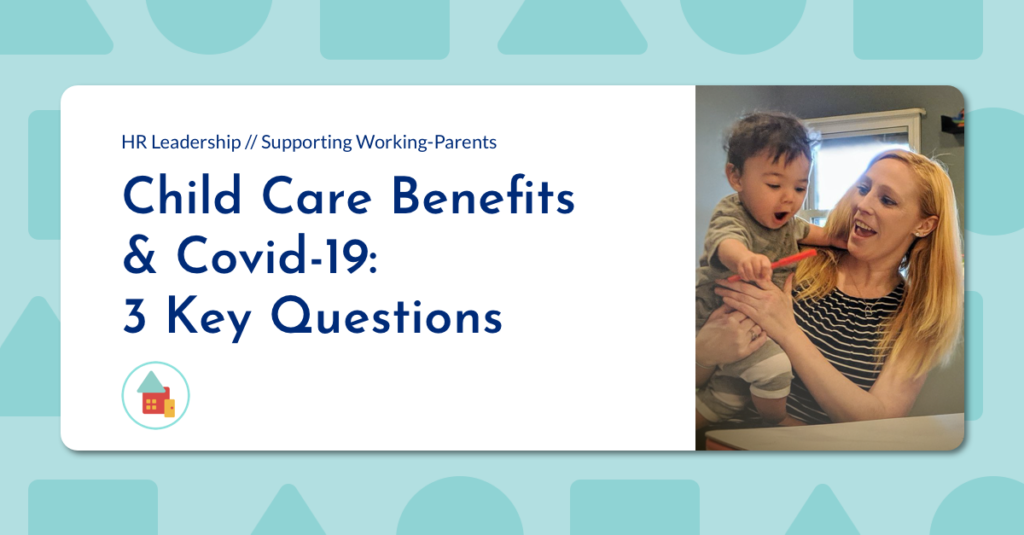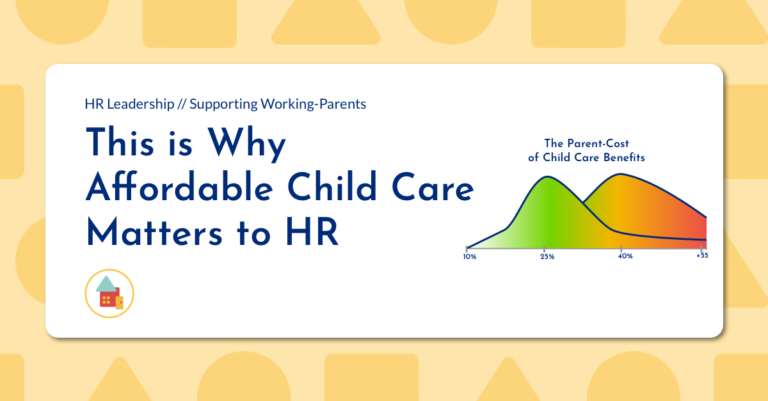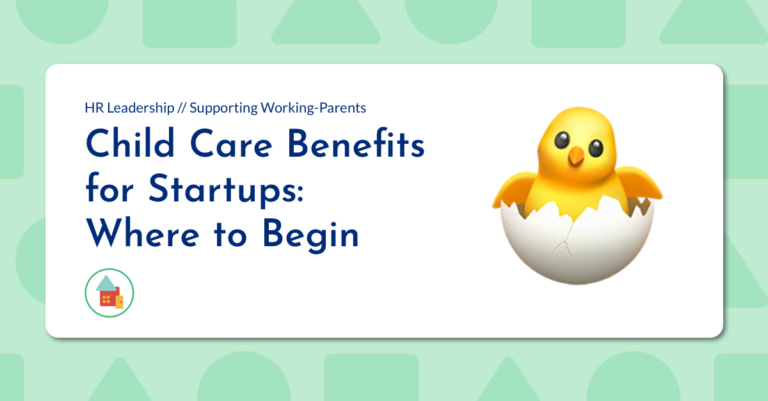Imagine this: it’s September, fall is in the air, and your working-parents have been juggling full-time jobs and pandemic parenting for six months. The band-aid efforts from last spring (remember “increased flexibility” and “helpful links”?) have worn off and your business partners are looking at Q4 and anxious to get their people back to 100%. Oh and of course open-enrollment is upon us, because it’s September.
Sound familiar?
If it’s time to do more to support your working-parents you’re likely wondering: what are best practices here? Who are the thought leaders? Is there a single solution that just gets my employees what they need? In talking with execs and PeopleOps right now, one thing is clear: the question is not whether to do more, the question is how.

Unfortunately, like with everything else, it depends. But there are several rule-of-thumb guidelines you can follow to focus on the highest leverage opportunities given your specific situation. That starts with understanding what your employees actually need right now.
Three key questions:
1/ Is your team still working from home, or are you trying to get people to show up in person?
In either case, they’ll need full-time child care, but work-from-home leads parents to prefer child care that is closer to home. Traditional options – like an on-prem center or options near the office may not be what your parents need right now. Instead, you’ll want to focus on a distributed solution, so parents can easily get kids to and from child care and then get back to the home office.
2/ Do you already have any child care benefits in place?
The most common benefits among mid-sized employers are an Employee Assistance Program (EAP) or emergency back-up care. If you’re starting from scratch, emergency back-up is important to consider for “normal times.” However, during Covid, working-parents actually need help finding full-time primary care, and back-up care is a secondary concern. Similarly, virtual tutor services may be a great option for normal times, but a patchwork of Zoom sessions aren’t going to allow your employees to do a full day of work. If your employees work full-time, they’ll need full-time child care, so focus on options that help with that.
3/ What’s the typical household income of employees with young children?
Consider the distribution of compensation ranges within your company: are employees with 8 – 15 years experience typically earning over $200,000? If not, you’ll want to make sure that your employees will be able to afford whatever child care benefits you select. Benefit equity is important, especially for employers with a wider range in compensation levels, such as hospitals, law firms, or some technology companies. As a general rule, nannies and center based child care are the most expensive forms of child care, especially at the infant and toddler level. That boutique nanny placement agency may be great, but many of your employees might not be able to afford it either way.
The answers to these three questions will guide where you want to focus your efforts right now. If you’re like most, you’re either starting from scratch or you may already have emergency back-up care. In either case, your working-parents need your help finding primary, full-time child care so they can refocus on their work and help your business get back on track to close out 2020 strong.
In talking with execs and PeopleOps right now, one thing is clear: the question is not whether to do more, the question is how.
What does that look like? Check back for part 2 of this series where I’ll unpack the different aspects of full-time child care and introduce how PeopleOps leaders are taking a “portfolio” approach to child care benefits.




